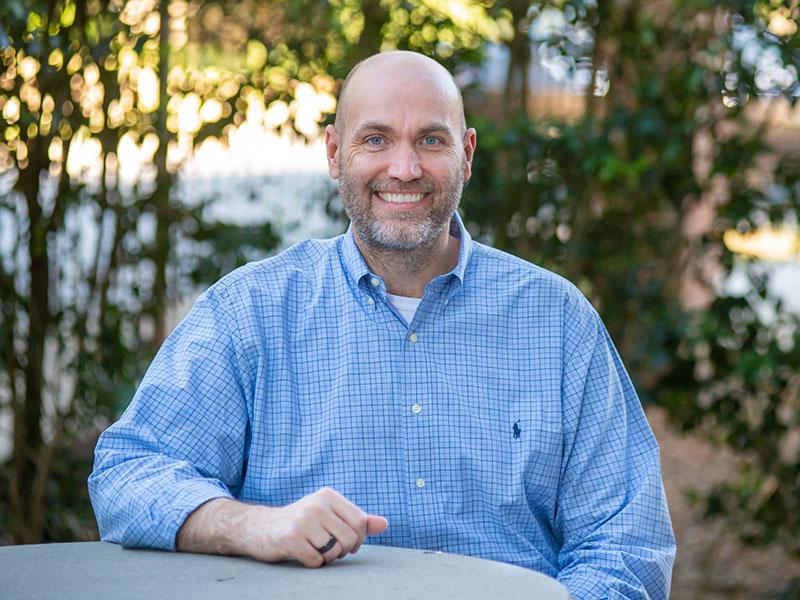TU Voices: Scott Tims on campus COVID-19 testing
When it comes to Tulane’s COVID-19 testing strategy, Scott Tims calls himself the man behind the curtain.
As Assistant Vice President for Campus Health, he oversees the day-to-day operation of the daily testing, contract tracing and isolation/quarantine programs that make it possible to have in-person learning on campus. Tulane Today spoke with him about the lessons he’s learned so far in the battle against the pandemic.
Explain your role in our testing plan.
I play an organizer or a conductor role here. I look at all of our different data sources. And I make sure we're testing based on what our data shows, and that we are making informed decisions
Which different segments of the Tulane community get tested at different frequencies?
Undergraduate students on and off campus are tested twice a week; graduate and professional students get tested every two weeks. Faculty and staff are tested monthly. When we started testing in August, our maximum capacity per day was about 850 tests. We can now do more than 2,500 a day if necessary. So, as we've added more capacity, we've been able to increase testing.
What have been the biggest lessons you’ve learned through this whole process?
I think we all underestimated how impactful contact tracing would be. Roughly 30-40% of our new cases were among students in quarantine. That means we identified them through contact tracing as having an exposure and got them to quarantine, and then kept them from spreading it to other people. I think if our contact tracing had not done that, we would have had probably three or four times the number of cases on campus than what we've had. So my biggest lesson learned was how much all of our strategies are working together to protect our campus and New Orleans communities.
Have you seen any clusters on campus?
We have not had any major event that I can go back to and track down to say it was a cluster. What we have seen are roommates, people who live together, who are typically those who are testing positive.
Are most positive individuals asymptomatic?
For students, 95-98% are asymptomatic — very few of our students have been extremely ill. What we have seen reported have been symptoms equal to mild seasonal allergies or the occasional headache. Most had no symptoms at all.
Are there any trends you’ve noticed about how people are most likely to contract the virus? What is likely the biggest risk factor?
The biggest risk factor is close personal contact — spending time with someone and socializing without social distancing and without wearing a mask. That's where we see the transmission happening. Someone having dinner with a group of friends or roommate situations where you might have a large group of people rooming together but not really protecting each other or being as careful. I don't know of any cases where it's been classroom transmission. A lot of my colleagues across the country have said the same thing.
This has been semester of challenges. What are the bright spots you’ve seen — and what gives you hope as you look ahead?
It's exciting to me how many of the students are thankful for being here. I get emails from parents after some of our webinars or interviews, and they're so grateful what we've done so that their student could have the experience of being on ground and on campus. That is the happy part of it for me. We were able to do something for people. And if I look nationally, we've done a good job with this. We've been able to stay open when other people haven't. I think that's something to be proud of. And it's nice to say that I was part of that.

